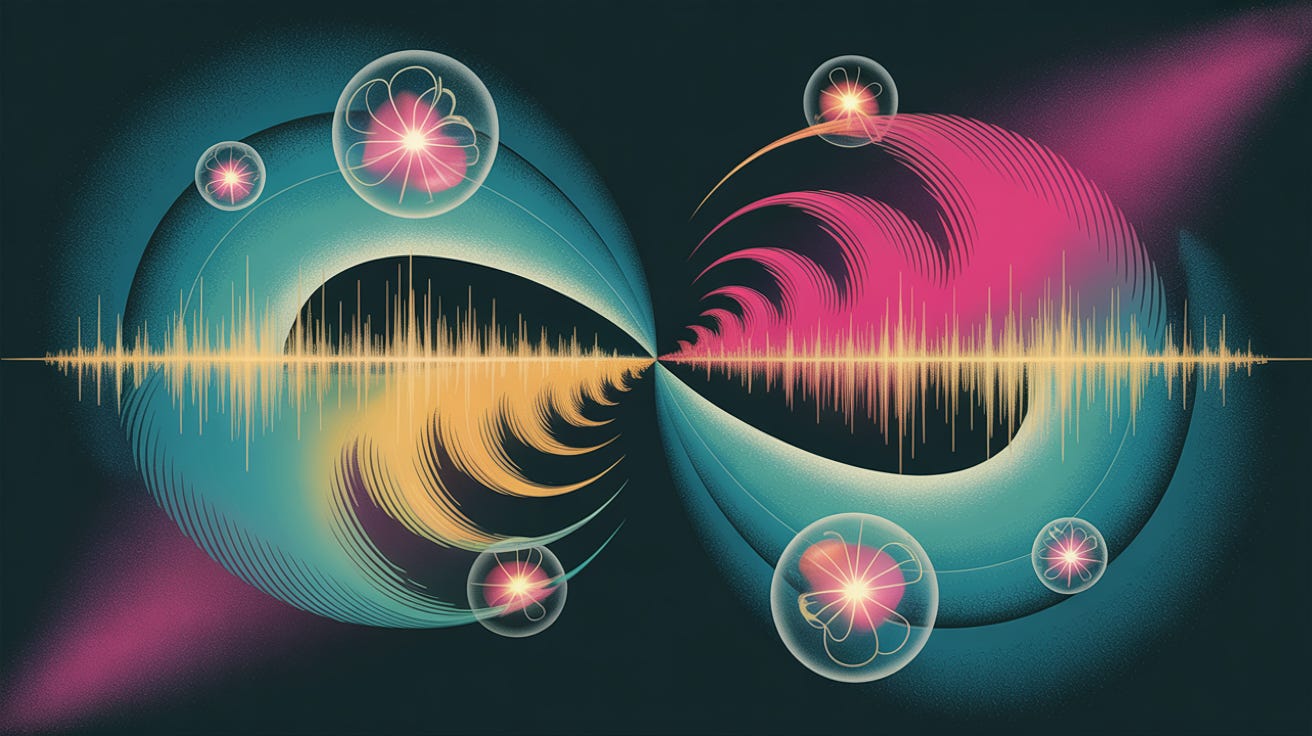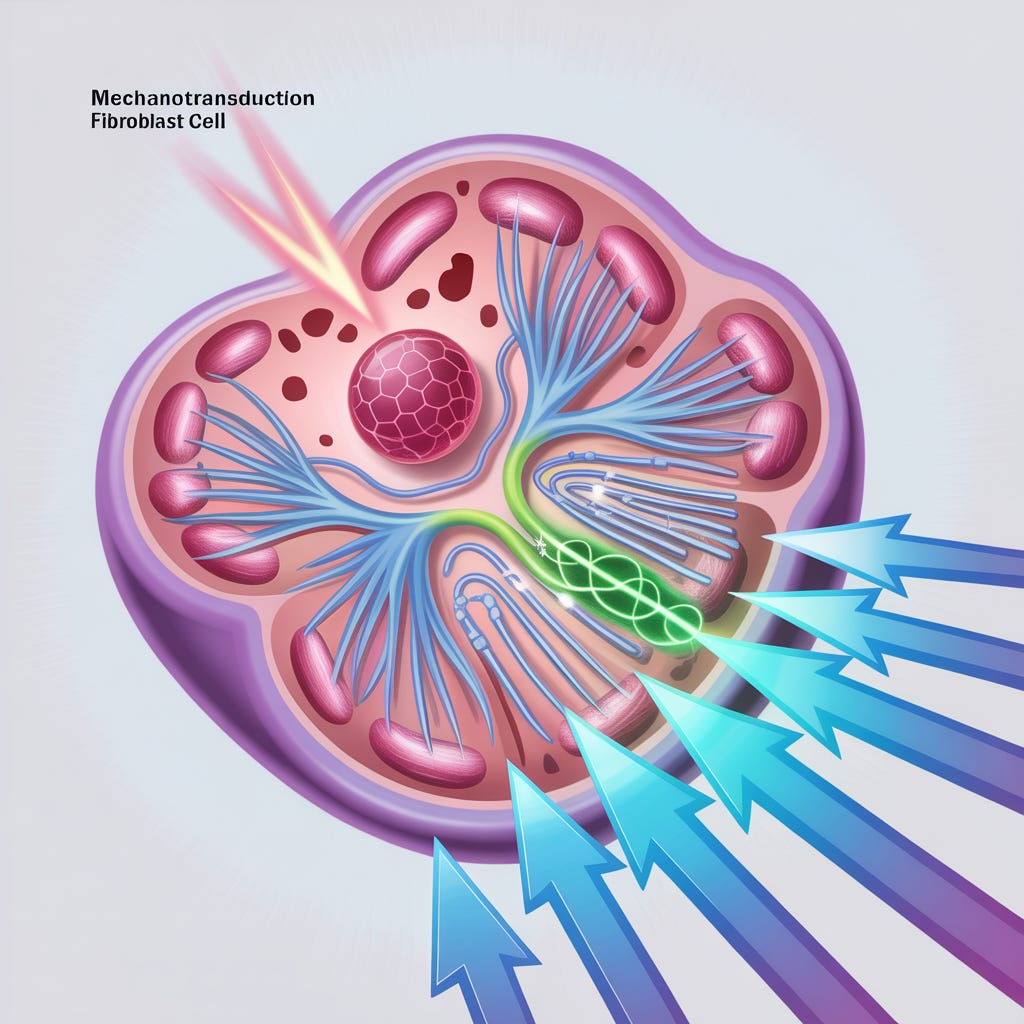A Deep Dive Into the Science of Sound Healing and Musical Medicine
In a world where we're constantly searching for natural ways to enhance our wellbeing, the answer might have been vibrating around us all along.
The Resonant Revolution
Picture this: You're listening to your favorite song, and suddenly you feel it—that tingling sensation that runs down your spine, the way your heartbeat seems to sync with the rhythm, how certain melodies can instantly transport you to a state of calm or energize you for the day ahead. What if I told you that these aren't just subjective experiences, but measurable, scientifically documented phenomena that reveal something profound about how frequencies literally reshape our biology?
Recent breakthroughs in neuroscience and psychoacoustics have unveiled a remarkable truth: specific musical frequencies don't just affect our emotions—they actively rewrite our neural patterns, modulate our stress hormones, and can even influence our DNA expression. This isn't mystical thinking; it's hard science that's revolutionizing everything from medical treatment to performance enhancement.
The Body Electric: Understanding Human Resonance
Every cell in your body is essentially a tiny oscillator, vibrating at specific frequencies. Scientists have discovered that the human body generates mechanical vibrations at very low frequencies called infrasonic waves, with the heart resonating at approximately 1 Hz, the brain at around 10 Hz, and blood circulation at 0.05 to 0.3 Hz. These aren't abstract concepts—they're the literal rhythms of life.
Research measuring the whole-body resonant frequencies of 113 standing humans found that our bodies resonate most strongly between 9-16 Hz, with an average of 12.3 Hz. This discovery helps explain why certain low-frequency sounds can feel so physically powerful—they're literally matching the natural oscillations of our skeletal and organ systems.
But the real magic happens when external frequencies interact with these internal rhythms through a process called entrainment.
The Science of Sonic Entrainment
Entrainment is perhaps one of the most fascinating phenomena in physics and biology. First identified by Dutch physicist Christiaan Huygens in 1665 with pendulum clocks, entrainment describes how independent oscillators synchronize their rhythms when placed in proximity. Your brain works the same way.
When exposed to periodic acoustic stimuli, brain waves naturally synchronize with external rhythms, particularly showing strong responses at 2 Hz in the delta range—which corresponds to optimal tempo for human motor coordination and time perception. This isn't passive listening; it's active neural rewiring.
The Brain's Musical Networks
Recent MIT research revealed that brain oscillations follow universal patterns across all cortical layers and species, creating a symphony of frequencies that integrate new information with existing memories. When you listen to music, you're essentially conducting this internal orchestra.
Music activates nearly all brain regions simultaneously—the hippocampus and amygdala for emotional memory, the limbic system for pleasure and reward, and the motor system for physical response. This massive neural activation explains why music feels so profoundly affecting.
The Frequency Pharmacy: Specific Frequencies and Their Effects
The 432 Hz Phenomenon
One of the most studied frequencies in recent years is 432 Hz. Double-blind crossover studies have shown that music tuned to 432 Hz, compared to the standard 440 Hz, significantly decreases heart rate and may reduce anxiety.
The 432 Hz frequency resonates in harmony with the Earth's natural frequency (the Schumann resonance of approximately 8 Hz) through mathematical octave relationships. When music is tuned to this "scientific tuning," it may create a more harmonious interaction with our body's natural electromagnetic field.
The Solfeggio Frequencies: Ancient Wisdom Meets Modern Science
The Solfeggio frequencies—396, 417, 528, 639, 741, and 852 Hz—have garnered significant scientific attention:
528 Hz: The "Love Frequency" A 2018 Japanese study found that just five minutes of listening to 528 Hz music significantly reduced stress in both the endocrine and autonomic nervous systems. This frequency is theoretically connected to DNA repair and has been used in ancient healing practices.
40 Hz: The Cognitive Enhancer Research has shown that 40 Hz stimulation may help reverse key signs of Alzheimer's disease in the brain and sh
ows promise for treating Parkinson's disease and chronic pain. This gamma frequency appears to enhance cognitive function and promote neural regeneration.
The Inaudible Impact: High-Frequency Effects
Perhaps most remarkably, research has demonstrated that inaudible high-frequency components (above 20 kHz) in music significantly affect brain activity, increasing alpha-band EEG power without conscious awareness. This suggests our bodies respond to sonic information far beyond our conscious perception.
The Molecular Symphony: How Sound Changes Your Biology
Dopamine and the Reward Cascade
When you listen to pleasurable music, your brain releases dopamine in the same reward circuits activated by food, sex, and other fundamental pleasures. But the timing is crucial: dopamine release occurs both during anticipation of musical peaks (in the dorsal striatum) and during the actual experience (in the ventral striatum).
Studies using eye-blink rate as a proxy for dopamine activity found that emotionally powerful music—even sad music—significantly increases dopamine-related responses. This explains why we can find pleasure in melancholy melodies.
Stress Hormones and Healing
Controlled studies demonstrate that listening to relaxing music before stress exposure significantly affects cortisol release, heart rate variability, and subjective stress perception. The implications for healthcare are profound.
Music-based interventions consistently increase heart rate variability and enhance parasympathetic nervous system activity, often accompanied by reduced cortisol levels. This physiological rebalancing creates optimal conditions for healing and recovery.
The Opioid Connection
Research using naltrexone (an opioid blocker) revealed that music's pleasurable effects partially depend on the brain's natural opioid system, suggesting music literally triggers our internal pharmacy of feel-good chemicals.
Vibrational Medicine: Beyond Audible Sound
Low-Frequency Healing
Vibroacoustic therapy using 30-120 Hz frequencies has shown remarkable results in treating muscle tension, improving blood circulation, and reducing pain. Seven scientific studies documented improved motor function in cerebral palsy patients using vibroacoustic therapy.
Studies of low-frequency vibration (20-50 Hz) on the human body reveal that vibration levels are higher on the chest than abdomen, and effectiveness varies with individual body mass index and constitution. This personalized response suggests future therapies might need individual frequency calibration.
Infrasound: The Secret Frequencies
Infrasound frequencies below 20 Hz can profoundly affect human physiology and psychology, with certain frequencies like 18.98 Hz potentially affecting visual perception by resonating with the natural frequency of the human eye. While this can sometimes cause discomfort, controlled applications show therapeutic potential.
Brainwave Entrainment: Tuning Your Mental State
The Five Frequency Bands
Research into brainwave entrainment reveals that different frequency bands correlate with distinct mental states: delta (0.5-3.5 Hz) for deep sleep and healing, theta (3.5-7 Hz) for creativity and meditation, alpha (8-12 Hz) for relaxation, beta (15-29 Hz) for focus, and gamma (30-90 Hz) for peak cognitive performance.
Binaural Beats and Isochronic Tones
Studies comparing different auditory entrainment methods found that isochronic tones (single tones pulsed at specific intervals) may be more effective than binaural beats for inducing desired brainwave states. Recent research showed that isochronic tone therapy produced greater changes in EEG power than traditional binaural beats.
The Emotional Frequency Spectrum
Musical Tension and Resolution
Harvard research reveals that music generates emotions through patterns of tension and resolution, manipulating how the brain handles prediction and anticipation. Brain imaging studies show that unexpected changes in musical features—intensity, tempo, and structure—trigger the strongest emotional responses and activate reward circuits.
The Autonomic Response
The emotional salience and valence of music directly influences the autonomic nervous system, affecting heart rate, breathing, and blood pressure. This creates a direct pathway from sound to physiological regulation.
Cultural and Individual Variations
While musical preferences vary culturally, research mapping emotional responses across Chinese and American populations found remarkable overlap in how specific frequencies affect emotional states. This suggests certain frequency-emotion relationships may be universal aspects of human neurobiology.
Therapeutic Applications: The Future of Frequency Medicine
Clinical Breakthroughs
Growing evidence suggests that Mozart's Sonata for Two Pianos in D Major can reduce seizure frequency in epilepsy patients, while specific frequencies show promise for treating conditions ranging from Parkinson's to depression to Alzheimer's.
Pain management studies demonstrate that music interventions work through multiple mechanisms: distraction, relaxation, stress reduction, and direct neurochemical modulation involving β-endorphin, oxytocin, dopamine, and serotonin systems.
Precision Frequency Therapy
The future of sound healing likely lies in personalized frequency prescriptions. As research confirms that "every organ has its own frequency-based spectrum" and these frequencies vary based on individual constitution and health status, we're moving toward treatments tailored to individual biofrequency profiles.
Practical Applications: Implementing Frequency Healing
Daily Frequency Practices
Morning Activation: Use 40 Hz gamma frequencies or upbeat music in major keys to enhance cognitive function and mood
Stress Relief: Apply 432 Hz music or 528 Hz "healing frequencies" during stressful periods
Sleep Optimization: Utilize delta frequencies (0.5-3.5 Hz) or low-frequency binaural beats before bedtime
Pain Management: Incorporate vibroacoustic therapy or specific frequency music during recovery periods
Quality and Delivery Matters
Research shows that high-resolution audio with inaudible high-frequency components produces superior effects compared to compressed audio. For therapeutic applications, audio quality becomes a crucial factor in treatment efficacy.
The Mechanisms Unveiled
Neurological Pathways
Sound vibration affects the human body through three primary mechanisms: hemodynamic effects (blood flow and circulation), neurological effects (nerve stimulation and brain wave entrainment), and musculoskeletal effects (muscle relaxation and bone health).
Molecular Interactions
At the cellular level, frequency therapy likely involves complex interactions between G protein-coupled receptors for dopamine, serotonin, and oxytocin, creating cascading effects throughout the nervous system.
Limitations and Future Directions
While the research is compelling, scientists emphasize that more controlled studies are needed to fully establish the clinical applications of specific frequencies. Current evidence is promising but still developing, particularly for therapeutic protocols and optimal dosing.
Recent advances in brainwave entrainment technology and real-time EEG feedback suggest that personalized, AI-driven frequency therapy may soon become reality.
The Sound of Tomorrow
We stand at the threshold of a new era in medicine and human optimization. The ancient intuition that sound has healing power is being validated by cutting-edge neuroscience, revealing mechanisms more sophisticated than our ancestors could have imagined.
As research continues to map the intricate relationships between sound, brain activity, and physiological response, we're discovering that music isn't just entertainment—it's a powerful technology for optimizing human potential.
The next time you put on your headphones or attend a concert, remember: you're not just listening to music. You're participating in a complex biological symphony, where external frequencies dance with your internal rhythms to create something greater than the sum of their parts.
The future of healing may not come in a pill, but in a precisely tuned frequency—a prescription written not by pharmaceutical companies, but by the fundamental vibrations of the universe itself.
About the Science: This article synthesizes findings from over 40 peer-reviewed studies published in leading journals including Nature, Science, PLOS One, and specialized neuroscience publications. All frequency claims are based on controlled research studies with measurable physiological outcomes.
Disclaimer: While the research is promising, frequency therapy should complement, not replace, conventional medical treatment. Always consult healthcare providers for serious medical conditions.




